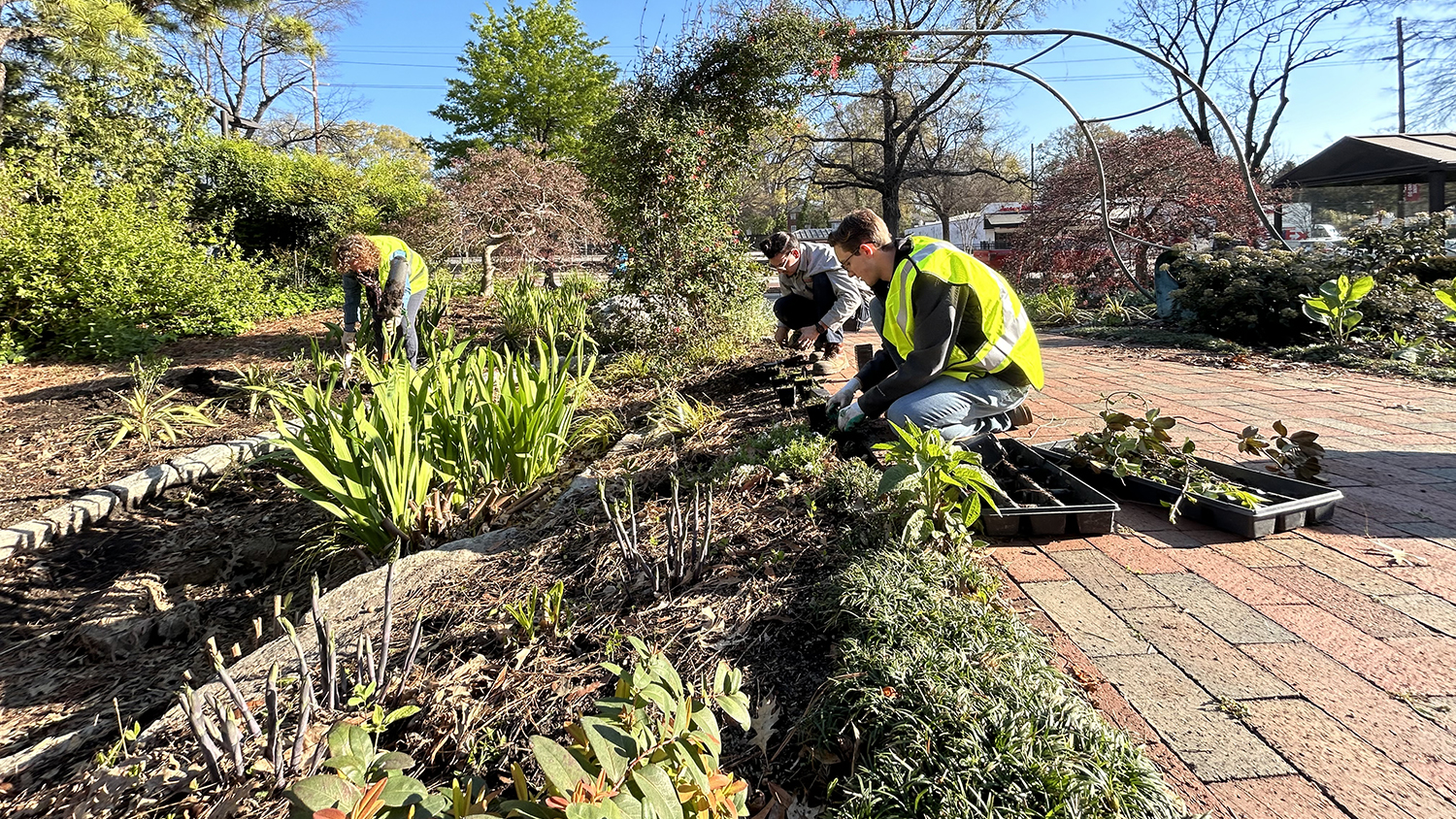Jefferson Scholars study ocean sciences, island species, local culture in Bermuda
In May, the Thomas Jefferson Scholars traveled to Bermuda, as part of the program’s inaugural international learning trip. The participants are N.C. State University students seeking dual degrees in the College of Agriculture and Life Sciences and the College of Humanities and Social Sciences. A group of 17, including juniors and seniors in the program, participated in the international experiential learning opportunity May 14-20. The program’s faculty advisers are Dr. Vicki Martin, biological sciences; Dr. Will Kimler, history; and Dr. Chad Jordan, plant biology.
“The Jefferson Scholars program fosters close contact between students and faculty, opportunities for meeting scientists, scholars and government officials, and extracurricular activities,” said Martin. “The Scholars combine intellectual and social activities to provide an atmosphere of support and fellowship. They meet biweekly throughout the academic year, go on trips and do service projects.

The scholars are selected and invited to join the group as entering freshmen, she said. “There are special courses just for Jefferson Scholars, including a senior capstone experience through a supervised independent study course for fourth-year students, coordinated with the faculty advisers. Each student’s research paper examines the scientific and humanistic perspectives on a question of interest to the student. The semester culminates in a presentation of the papers at a symposium for all Jefferson Scholars.”
However, this year, she said, “we added an international component to the Jefferson Scholars program; the idea is to take the junior class on an international experiential learning trip each year to a different destination.”
The inaugural trip was supported by the Thomas Jefferson Scholars endowment fund.

The primary destination was St. Georges, Bermuda, home of the Bermuda Institute of Ocean Sciences, which is observing 110 years of ocean science research and education. Its mission is to transform the fields of oceanography, marine science and ocean health through a blend of cutting-edge research, comprehensive educational experiences and a commitment to share knowledge internationally, Martin explained.
“Our students stayed in the institute’s residential facilities, ate in the dining hall, engaged in boat adventures and were able to interact with faculty and students from around the globe,” Martin said.
The students also had the opportunity to tour the institute’s premier deep-sea research vessel, the RV Atlantic Explorer, an ocean vessel supported by the National Science Foundation. It is equipped with navigational, laboratory and mechanical facilities to support biological, geological, chemical and physical oceanography research.

“The week was filled with amazing excursions,” Martin said. “Students experienced the coral reefs of the island by snorkeling at Whalebone Bay, in Harrington Sound and at North Rock.”
The group also was taken to a private island, Nonsuch Island, which is a part of Bermuda’s Nature Reserve. The island was restored by the conservationist David Wingate to its original state that existed in 1609.
“Dr. Wingate planted thousands of trees and brought back Bermuda’s national bird the Bermuda Petrel (also known as the Cahow) from 300 years of near extinction,” said Martin. “On a private tour of the island, our students saw where Dr. Wingate lived on the island, experienced the unspoiled vegetation all endemic to the island and viewed many native species of birds.”

The Jefferson Scholars also visited the Blue Hole Park in the Walsingham Nature Reserve of Bermuda, in Hamilton parish. Within the reserve there are caves and grottos with stalactite formations and natural pools.
“One of the highlights was the mangrove pond with its crystal clear deep blue water and extensive population of fish,” Martin said. “Our students went swimming in the Blue Hole and hiked down into the Walsingham cave to view the stalactites – a fabulous display of speleogenesis [the origin and development of caves].”
Students learned much about the local culture by riding motor scooters and taking the bus to various locations across the island, she said. “We went to the south shore beaches to experience the pink sand and aquamarine waters of beautiful spots such as Horseshoe Bay Beach, Elbow Beach and Tobacco Bay Beach. Many visited the glass sand beaches where sea glass deposits on the Bermuda shores.”
This glass comes from hundreds of shipwrecks stocked with medicine bottles, whiskey cases, decorative glass and glass goblets that over time eventually wash up on the shores of Bermuda.
While touring the town of St. Georges on Bermuda’s east coast — the “oldest English town in the New World” – the group saw houses constructed with load-bearing masonry walls, rendered and painted in pastel colors, with roofs of stone slabs painted white. They also visited several forts in the city, including Alexandra Battery, Fort St. Catherine and the St. David’s lighthouse.

Among historic and educational sites they saw in the capital city of Hamilton were the Kings Wharf Royal Naval Dockyard, Bermuda’s most visited site, where cruise ships dock; the Bermuda Aquarium and Natural History Museum and Zoo; and the Bermuda Botanical Gardens. Nearby, students climbed 185 steps to the top of the cast-iron Gibbs Lighthouse, where they were greeted with panoramic views of the island.
A highlight of the Hamilton visit was the evening Harbor night celebration. “The front street gets closed to all vehicles after sunset and comes alive with sparkling lights, music and dancing by the Gombey dancers. The Gombey dance is a mixture of British, West African and indigenous new-world cultures where dancers dress in colorful attire and perform in the street,” Martin said.
“Our trip took a week, but the memories and experiences of the Thomas Jefferson Scholars in Bermuda will last a lifetime.” – Terri Leith


